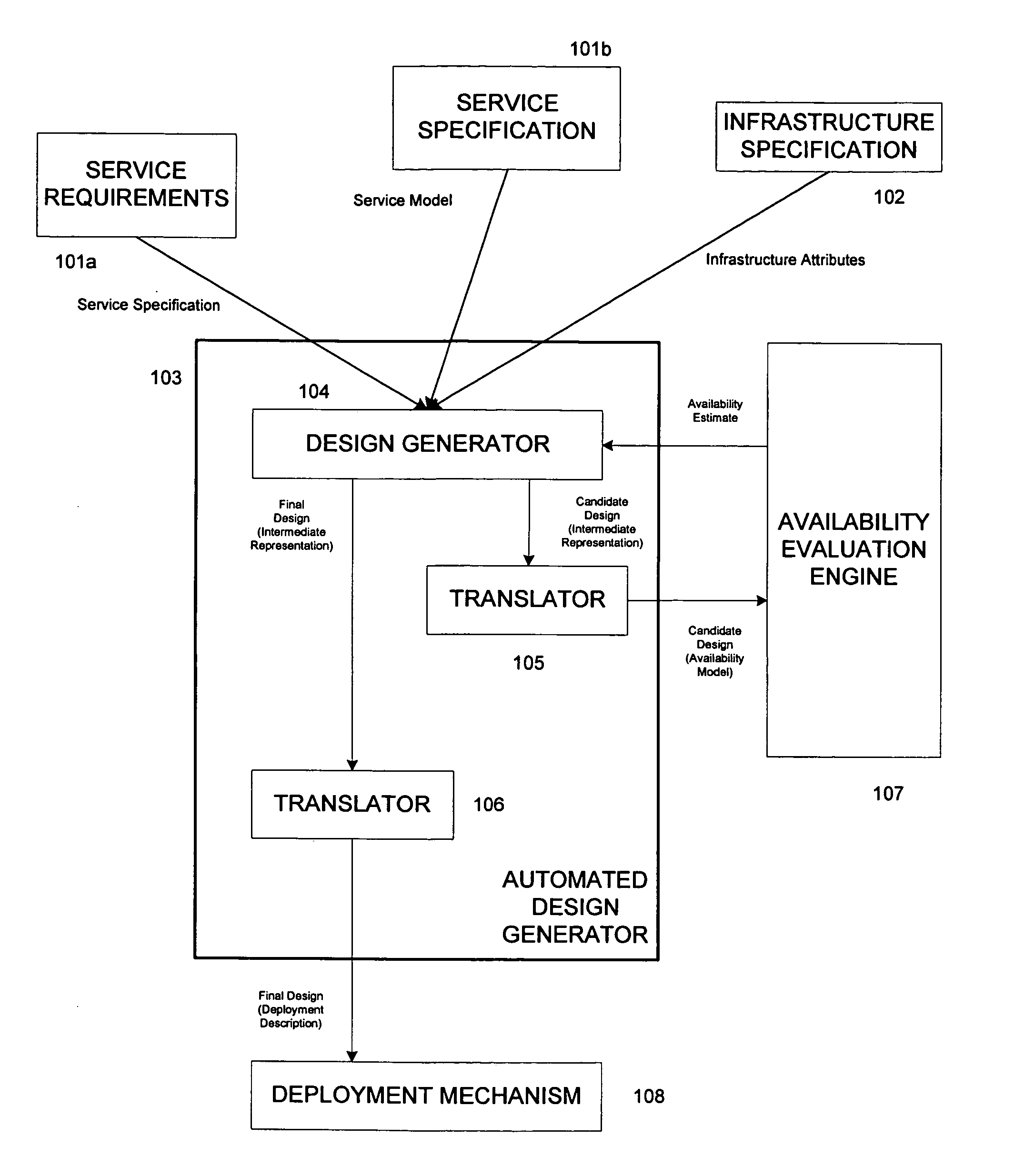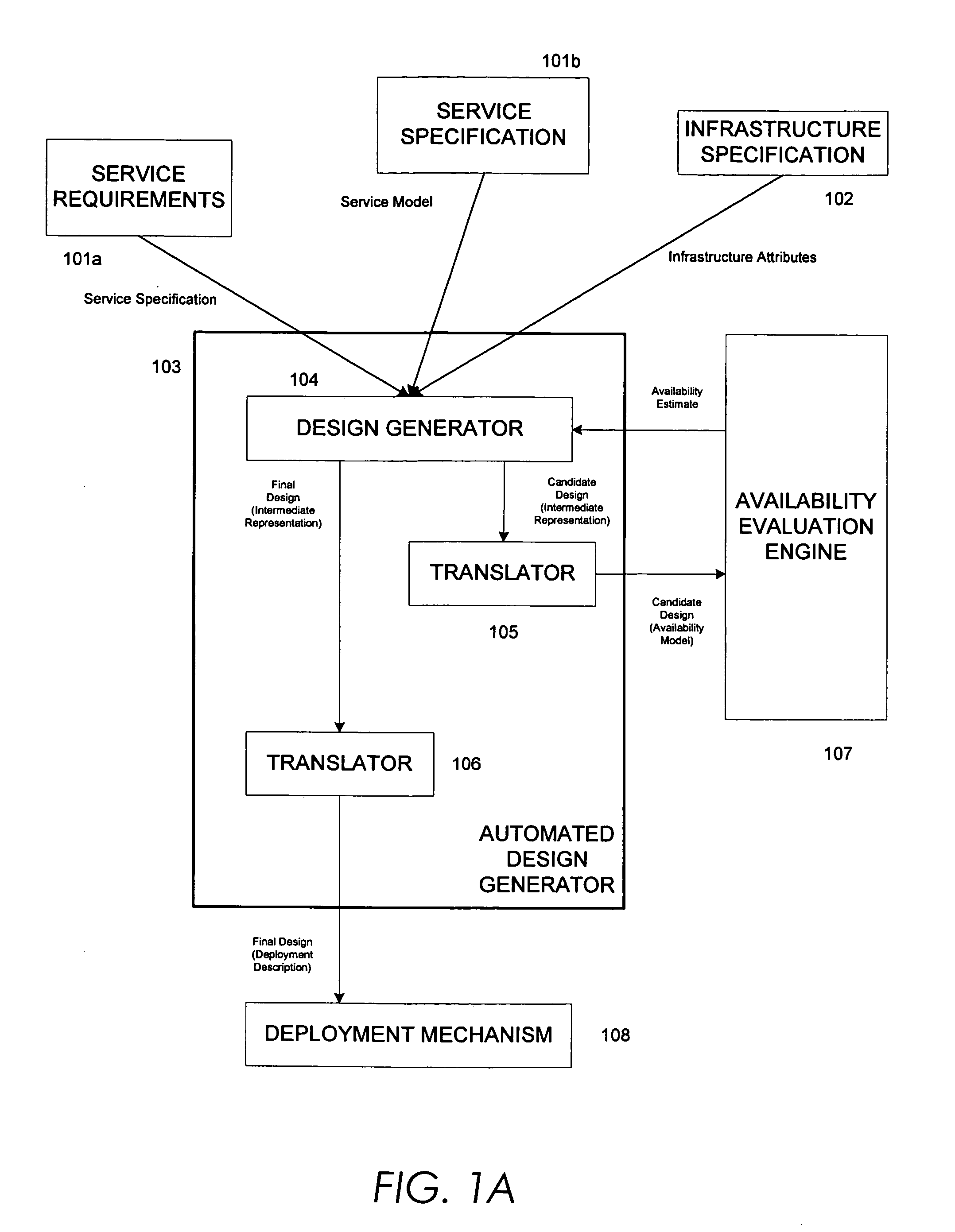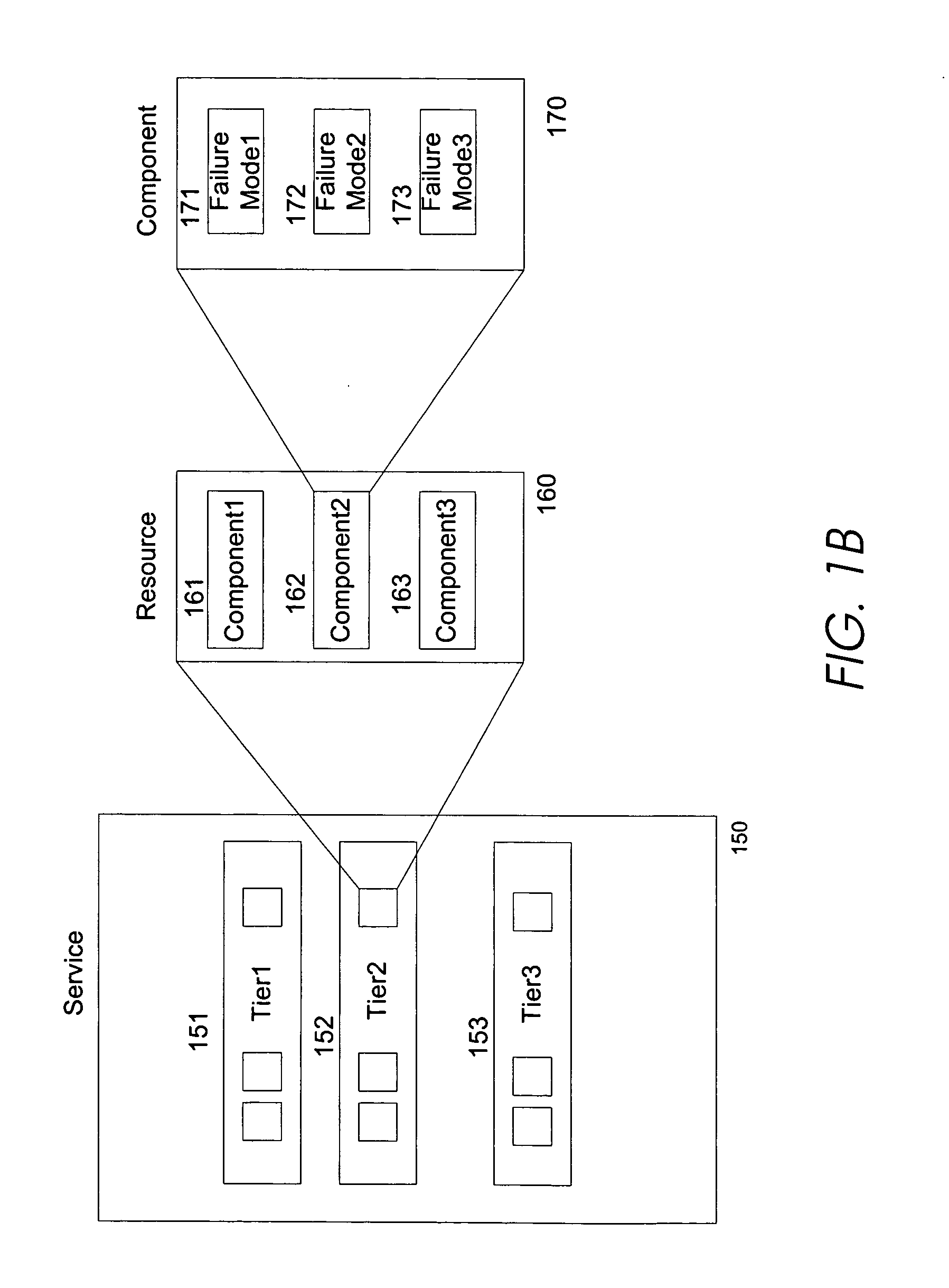Method and apparatus for enhanced design of multi-tier systems
a multi-tier system and enhanced design technology, applied in the field of multi-tier system architectures, can solve the problems of reducing overall productivity, revenue and client satisfaction, adversely affecting service availability, and combined infrastructure having multiple components can experience a significant rate of component failures
- Summary
- Abstract
- Description
- Claims
- Application Information
AI Technical Summary
Benefits of technology
Problems solved by technology
Method used
Image
Examples
Embodiment Construction
[0029] The present solution automates the process of designing and determining an optimal or near-optimal configuration of a service's computing infrastructure to meet service availability and performance requirements, with respect to a given set of infrastructure and service attributes. The system targets the automated design of services having a common multi-tier structure, such as web tier plus application server tier plus database tier, but could also be used to design single tier services. The design space explored automatically can be large and consist of multiple dimensions including but not limited to a choice of hardware and software components, hardware and software configurations, number of hardware components, use of redundant components, state of redundant components (cold, standby, active), and so forth. Each choice within each of these dimensions presents a different tradeoff among availability, performance, and cost of ownership, that is assessed by the system. The s...
PUM
 Login to View More
Login to View More Abstract
Description
Claims
Application Information
 Login to View More
Login to View More - R&D
- Intellectual Property
- Life Sciences
- Materials
- Tech Scout
- Unparalleled Data Quality
- Higher Quality Content
- 60% Fewer Hallucinations
Browse by: Latest US Patents, China's latest patents, Technical Efficacy Thesaurus, Application Domain, Technology Topic, Popular Technical Reports.
© 2025 PatSnap. All rights reserved.Legal|Privacy policy|Modern Slavery Act Transparency Statement|Sitemap|About US| Contact US: help@patsnap.com



